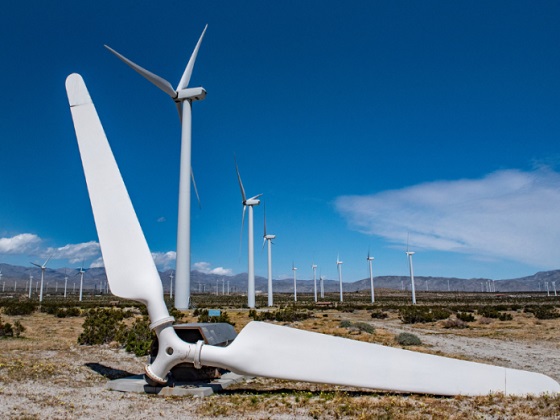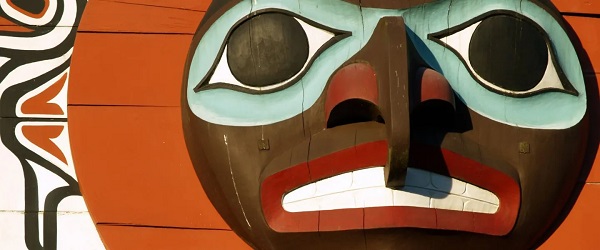Energy
Buckle Up for Summer Blackouts: Wind Is Already Failing Texas in Spring

From Heartland Daily News
By Jason Isaac
When the wind blows too much, natural gas plants are forced to shut down because they can’t underbid wind producers that can bid zero or negative. But when the wind doesn’t blow when it is needed, wind generators can afford the loss of revenue because they earn so much from tax subsidies.
It’s been all quiet on the electric grid front for a few months — but don’t get your hopes up. Over the last month, electricity prices came near the $5000/MWh regulatory cap three separate times because the wind wasn’t blowing enough when the sun went down.
If this sounds familiar, you’re not wrong.
You may hear from the drive-by media that the problem is unseasonably warm temperatures, or that there are a lot of power plants down for maintenance. But high 80s in April and low 90s in May are not unusual, and the Texas grid used to manage these weather changes with no problems. From 2014 to 2016, real-time prices only went over $1000/MWh twice, but it’s happened three times already this year.
If the grid is already on shaky ground, with many weeks to go before blistering triple-digit temperatures shoot electric demand through the roof, all signs are pointing to an unpleasant summer.
The problem with the Texas grid is so simple it’s infuriating: Relying too heavily on unpredictable wind and solar, without enough reliable reserve capacity, means higher volatility — leading to higher prices and increasing need for expensive interventions by ERCOT to avoid outages. This is why your electric bill is going up and up even though wind and solar are supposed to be cheap.
While Texas certainly has a lot of sun, peak solar output almost never aligns with peak electric usage. The Lone Star State also has plenty of wind, but wind generation is wildly unpredictable — by nature. It’s not unusual for a wind generator’s output to swing 60 percentage points or more in a single week.
Take last month, for example. On Tuesday, April 16, electricity prices reached their cap because ERCOT’s day-ahead wind forecast was off by 50%. Five gigawatts of wind we were counting on to power Texas as the sun went down didn’t show up. That was the equivalent of simultaneously shutting down 10 large natural gas units, or all of the state’s nuclear capacity. If the latter occurred, the news media would be up in arms (and rightfully so). But because the culprit was the political darling of both the left and the right, no one heard about it.

ERCOT hasn’t been the best at predicting wind output, and the problem isn’t entirely its fault. Wind veers so wildly between extremes it’s nearly impossible to plan a sustainable grid around its fickleness — yet wind makes up 26% of our generating capacity.
It’s all because lucrative tax breaks and subsidies at the state and federal level, combined with flaws in ERCOT’s market design, make it almost impossible for wind to lose money — and harder than ever for natural gas to compete, even though it’s far more reliable and affordable. When the wind blows too much, natural gas plants are forced to shut down because they can’t underbid wind producers that can bid zero or negative. But when the wind doesn’t blow when it is needed, wind generators can afford the loss of revenue because they earn so much from tax subsidies.
Imagine trying to open a restaurant when your competitor next door is paying its customers to eat there. It’s no wonder natural gas capacity in ERCOT has barely grown over the past decade, and not enough to make up for losses of coal plants, while demand has been steadily increasing.
All those subsidies are hurting our most reliable, affordable energy producers and putting our economy at risk — leaving you and me, the taxpayers on the hook.
While most political issues are far more complex and nuanced than brazen attack ads and headlines would lead you to believe, in this case, it really does boil down to one simple problem.
And it would be easy to solve — if lawmakers are willing to go against the grain of political correctness and set a clear reliability standard for the wind and solar generators that want to connect to our grid.
Unfortunately, that’s a gargantuan “if.”
As a former lawmaker, I understand the pressures our legislators are under to toe the line on alternative energy. Major utilities embracing World Economic Forum- and United Nations-aligned “energy transition” policies that seek to redefine what’s “clean” and what’s “pollution” are making matters worse. And the incessant misinformation from their well-funded lobby that promise rural “economic development” and “cheap energy” sound too good to be true, because they are.
Elected officials don’t serve the lobby. They serve Texans — or, at least, they should.
And Texans want a reliable, affordable grid. They want to not have to worry about losing power in the heat of the summer or the dead of winter. The Legislature must put a stop to these market-distorting subsidies and make reliability, not popularity, the priority for our electric grid.
Gov. Greg Abbott sent a letter on July 6, 2021 to members of the Public Utility Commission of Texas (PUC) directing them to “take immediate action to improve electric reliability across the state.” The second directive was to “Allocate reliability costs to generation resources that cannot guarantee their own availability, such as wind or solar power.” Unfortunately, the PUC hasn’t acted on this directive or even studied it. The costs of scarcity on the grid are estimated to have exceeded $12B in 2023, which is equal to two-thirds of the property tax relief passed in the 88th Legislature, all paid for by ratepayers.
“Unfortunately for Texans, the ERCOT grid is moving from a single grid with gas and coal power plants running efficiently all day to two grids: one for wind and solar and one for expensive backup power that fills in the gaps when there is not enough wind and sun,” says Dr. Brent Bennett, policy director for Life:Powered at the Texas Public Policy Foundation. “Every time these scarcity events occur, whether due to real scarcity or artificial scarcity created by ERCOT’s operating policies, ratepayers are shelling out tens to hundreds of millions of dollars for backup power. It is the most expensive way to operate a grid, and Texans will feel the bite as these costs are absorbed over time.”
The Californication of our grid is unfolding before our eyes. If the Legislature and the PUC don’t act fast, the Texas miracle won’t last.
The Honorable Jason Isaac is CEO of the American Energy Institute and a senior fellow at the Texas Public Policy Foundation. He previously served four terms in the Texas House of Representatives
Business
Virtue-signalling devotion to reconciliation will not end well

From the Fraser Institute
By Bruce Pardy
In September, the British Columbia Supreme Court threw private property into turmoil. Aboriginal title in Richmond, a suburb of Vancouver, is “prior and senior” to fee simple interests, the court said. That means it trumps the property you have in your house, farm or factory. If the decision holds up on appeal, it would mean private property is not secure anywhere a claim for Aboriginal title is made out.
If you thought things couldn’t get worse, you thought wrong. On Dec. 5, the B.C. Court of Appeal delivered a different kind of upheaval. Gitxaala and Ehattesaht First Nations claimed that B.C.’s mining regime was unlawful because it allowed miners to register claims on Crown land without consulting with them. In a 2-to-1 split decision, the court agreed. The mining permitting regime is inconsistent with the United Nations Declaration on the Rights of Indigenous People (UNDRIP). And B.C. legislation, the court said, has made UNDRIP the law of B.C.
UNDRIP is a declaration of the United Nations General Assembly. It consists of pages and pages of Indigenous rights and entitlements. If UNDRIP is the law in B.C., then Indigenous peoples are entitled to everything—and to have other people pay for it. If you suspect that is an exaggeration, take a spin through UNDRIP for yourself.
Indigenous peoples, it says, “have the right to the lands, territories and resources which they have traditionally owned, occupied or otherwise used or acquired… to own, use, develop and control, as well as the right to “redress” for these lands, through either “restitution” or “just, fair and equitable compensation.” It says that states “shall consult and cooperate in good faith” in order to “obtain free and informed consent prior to the approval of any project affecting their lands or territories and other resources,” and that they have the right to “autonomy or self-government in matters relating to their internal and local affairs, as well as ways and means for financing their autonomous functions.”
The General Assembly adopted UNDRIP in 2007. At the time, Canada sensibly voted “no,” along with New Zealand, the United States and Australia. Eleven countries abstained. But in 2016, the newly elected Trudeau government reversed Canada’s objection.
UN General Assembly resolutions are not binding in international law. Nor are they enforceable in Canadian courts. But in 2019, NDP Premier John Horgan and his Attorney General David Eby, now the Premier, introduced Bill 41, the Declaration on the Rights of Indigenous Peoples Act (DRIPA). DRIPA proposed to require the B.C. government to “take all measures necessary to ensure the laws of British Columbia are consistent with the Declaration.” The B.C. Legislature unanimously passed the bill. (The Canadian Parliament passed a similar bill in 2021.)
Two years later, the legislature passed an amendment to the B.C. Interpretation Act. Eby, still B.C.’s Attorney General, sponsored the bill. The amendment read, “Every Act and regulation must be construed as being consistent with the Declaration.”
Eby has expressed dismay about the Court of Appeal decision. It “invites further and endless litigation,” he said. “It looked at the clear statements of intent in the legislature and the law, and yet reached dramatically different conclusions about what legislators did when we voted unanimously across party lines” to pass DRIPA. He has promised to amend the legislation.
These are crocodile tears. The majority judgment from the Court of Appeal is not a rogue decision from activist judges making things up and ignoring the law. Not this time, anyway. The court said that B.C. law must be construed as being consistent with UNDRIP—which is what Eby’s 2021 amendment to the Interpretation Act says.
In fact, Eby’s government has been doing everything in its power to champion Aboriginal interests. DRIPA is its mandate. It’s been making covert agreements with specific Aboriginal groups over specific territories. These agreements promise Aboriginal title and/or grant Aboriginal management rights over land use. In April 2024, an agreement with the Haida Council recognized Haida title and jurisdiction over Haida Gwaii, an archipelago off the B.C. coast formerly known as the Queen Charlotte Islands. Eby has said that the agreement is a template for what’s possible “in other places in British Columbia, and also in Canada.” He is putting title and control of B.C. into Aboriginal hands.
But it’s not just David Eby. The Richmond decision from the B.C. Supreme Court had nothing to do with B.C. legislation. It was a predictable result of years of Supreme Court of Canada (SCC) jurisprudence under Section 35 of the Constitution. That section guarantees “existing” Aboriginal and treaty rights as of 1982. But the SCC has since championed, evolved and enlarged those rights. Legislatures can fix their own statutes, but they cannot amend Section 35 or override judicial interpretation, even using the “notwithstanding clause.”
Meanwhile, on yet another track, Aboriginal rights are expanding under the Charter of Rights and Freedoms. On the same day as the B.C. Court of Appeal decision on UNDRIP, the Federal Court released two judgments. The federal government has an actionable duty to Aboriginal groups to provide housing and drinking water, the court declared. Taxpayer funded, of course.
One week later, at the other end of the country, the New Brunswick Court of Appeal weighed in. In a claim made by Wolastoqey First Nation for the western half of the province, the court said that Aboriginal title should not displace fee simple title of private owners. Yet it confirmed that a successful claim would require compensation in lieu of land. Private property owners or taxpayers, take your pick.
Like the proverb says, make yourself into a doormat and someone will walk all over you. Obsequious devotion to reconciliation has become a pathology of Canadian character. It won’t end well.
Energy
The U.S. Just Removed a Dictator and Canada is Collateral Damage

Early this morning, the United States says it carried out a ground raid supported by air strikes inside Venezuela, reportedly involving elite U.S. forces, including Delta Force, and removed Venezuelan President Nicolás Maduro and his wife Cilia Flores from the country.
President Donald Trump confirmed the operation publicly and stated that the United States intends to “run Venezuela” during a transition period, explicitly including control over the country’s oil sector. That single statement should alarm Canada far more than any diplomatic condemnation ever could.
Kelsi Sheren is a reader-supported publication.
To receive new posts and support my work, consider becoming a free or paid subscriber.
While this move may be justified on moral or strategic grounds for the U.S., it is unequivocally bad news for Canada, really really bad. Canada’s energy position just weakened significantly and now Canada’s leverage with the United States has always rested on one simple fact: the U.S. needed Canadian oil.
Not liked it. Needed it.
Canada became Washington’s largest and most reliable foreign energy supplier not because it was cheap, fast, or efficient but because alternatives were unstable, sanctioned, or politically toxic. Venezuela was one of those alternatives.
It isn’t anymore.
If the U.S. succeeds in stabilizing Venezuelan oil production under its influence, Canada loses something it cannot easily replace and wish it did sooner, strategic indispensability. When your biggest customer gains options, your negotiating power not only shrinks, it completely disappears.
Venezuelan crude is largely heavy oil, the same category as much of Canada’s oil sands production. Many U.S. refineries, especially along the Gulf Coast, are designed to process heavy crude. For years, sanctions and mismanagement kept Venezuelan barrels off the market. Canadian heavy helped fill that gap. That advantage just cracked open. If Venezuelan supply re-enters global markets under U.S. oversight, Canadian oil faces more competition, downward pressure on prices, wider discounts for heavy crude and reduced urgency for new Canadian infrastructure. Urgency that Mark Carney refused to see was needed.
Canada’s oil is already expensive to extract and transport. It is already burdened by regulatory delays, pipeline bottlenecks, and political hostility at home. Now it faces a rival with larger reserves, lower production costs, shorter shipping routes and U.S. strategic backing
That is not a fair fight, but the liberals put us in this position and only have themselves to blame. Ottawa officially has no cards left to play. Canada’s response options are beyond limited and that’s the real problem.
Ottawa cannot meaningfully condemn the U.S. without risking trade and defence relations. It cannot influence Venezuelan reconstruction. It cannot outcompete Venezuelan oil on cost and it has spent years undermining its own energy sector in the name of climate virtue signalling. This is just the snake eating it’s tail and now realizing its proper fucked.
Canada is watching a major shift in global energy power from the sidelines, with no leverage and no contingency plan. This is the cost of mistaking morality for strategy. This is the cost of an ego gone unchecked.
Canada likes to tell itself that being stable, ethical, and predictable guarantees relevance. It doesn’t, Canada isn’t even in the game anymore it just hasn’t realized it. It only works when your partner has no better options.
The U.S. did not remove a communist dictator in Venezuela to protect Canadian interests. It did it to secure American interests energy, influence, and control. Thats what a real leader does, puts it’s country and it’s citizens first.
Canada’s reliability is now a nice bonus, not a necessity. That shift will show up quietly in trade negotiations, in infrastructure decisions and how quickly Canadian concerns get brushed aside. No dramatic break. Just less attention. Less urgency. Less patience and soon enough Canada won’t be invited to the table to even begin the conversation. Canada has just been down graded to the kids table.
This moment didn’t begin today. It began when Canada failed to build pipelines, ego drove away energy investment, allowed its regulatory system to become a chokehold and treated its largest export sector as an embarrassment.
While Ottawa debated optics, the U.S. planned for contingencies. Today was one of them.
The removal of a communist dictator in Venezuela may be a massive victory for it’s citizen and a strategic win for the United States but for Canada, it is a warning shot. Canada just became more optional in a world that punishes irrelevance quickly and quietly.
Being polite won’t save us. Being virtuous won’t save us.
Only being necessary ever did and today, Canada no longer became necessary.
KELSI SHEREN
– – – – – – – – – – – –
One Time Donation! – Paypal – https://paypal.me/
Buy me a coffee! – https://buymeacoffee.com/
Let’s connect!
Youtube – https://www.youtube.com/@
Instagram: https://www.instagram.com/
Substack: https://substack.com/@
TikTok – https://x.com/KelsiBurns
-

 International2 days ago
International2 days ago“Captured and flown out”: Trump announces dramatic capture of Maduro
-

 International2 days ago
International2 days agoTrump Says U.S. Strike Captured Nicolás Maduro and Wife Cilia Flores; Bondi Says Couple Possessed Machine Guns
-

 Energy2 days ago
Energy2 days agoThe U.S. Just Removed a Dictator and Canada is Collateral Damage
-

 International2 days ago
International2 days agoUS Justice Department Accusing Maduro’s Inner Circle of a Narco-State Conspiracy
-

 Business2 days ago
Business2 days agoVacant Somali Daycares In Viral Videos Are Also Linked To $300 Million ‘Feeding Our Future’ Fraud
-

 Haultain Research1 day ago
Haultain Research1 day agoTrying to Defend Maduro’s Legitimacy
-

 International2 days ago
International2 days agoU.S. Claims Western Hemispheric Domination, Denies Russia Security Interests On Its Own Border
-

 Daily Caller1 day ago
Daily Caller1 day agoTrump Says US Going To Run Venezuela After Nabbing Maduro




